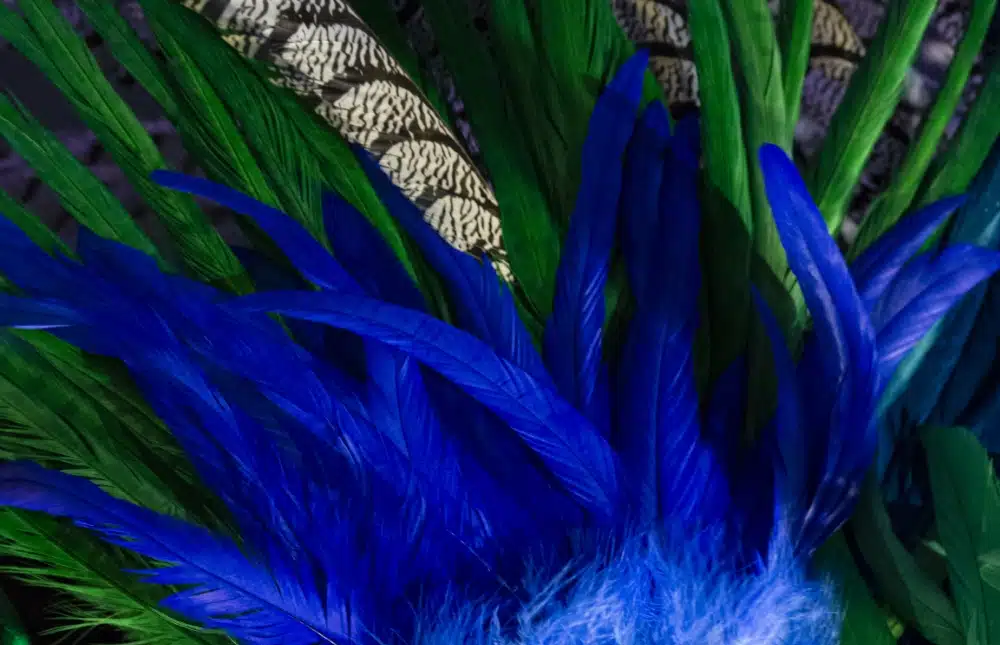Exuberant freedom
In the Caribbean, carnival is a breathtaking cultural celebration which brings the region’s islands together in a whirlwind of colour, music and festivities. It’s one of the most eagerly awaited events of the year, with locals and visitors alike mingling to dance and have fun as part of a joyous moment of catharsis. Escales takes you there to discover (or rediscover) a tradition that is far more complex than most people imagine. This multi-faceted festival brings out the very essence of Caribbean culture.
A short history of carnival
Like many festivals, carnival (or “kannaval” in Creole) was born out of a mixture of religious and pagan celebrations. Its mixed-race origins give it a natural place in Caribbean culture, which is characterised by intermixing and Creole language and peoples. It has its roots in festivities dating back to ancient Rome, such as Saturnalia, when slaves became masters and vice versa. With the advent of Christianity, pagan celebrations were recast with a religious veneer. From that moment on, carnival has always ended on the evening of Mardi Gras, the last moment when people can enjoy earthly pleasures before 40 days of fasting for Lent. In Guadeloupe and Martinique, the terms “carnival” and “Mardi Gras” are sometimes synonymous.
A moment of release for slaves in the Caribbean
This festival took root in the Caribbean in the 17th century. The enslaved peoples gradually made it their own, combining it with their African cultures (using percussion, dance, song and so on). This brief moment out of time provided them a sweet release in which they could breathe a little more freely. During the celebrations, the usual order is reversed, chaos reigns, and everyday reality and traditional roles are suspended.
Irrationality made rational
Nowadays, Caribbean carnival’s religious side has faded. On some islands, it’s not even celebrated around Mardi Gras. For example, carnival begins in May in the Bahamas and in June in Saint Lucia and Saint Vincent and the Grenadines. Its festive and cathartic element is still very much in evidence, however. The islands come into their flamboyant own, with steel band competitions in St Lucia, chocolate and mud being used to coat people’s bodies in Trinidad, and glitter galore in Jamaica. The Caribbean is all about freedom, music and parties during carnival season. And everyone is expected to get involved!

It’s a way of saying that everyone can be as irrational and mad as they like and that – apart from violence and stabbings – anything goes. The difference between adults and children seems to disappear for a moment. A universal sense of impudence and freedom are counterbalanced by a general cheerfulness.
Even today, Goethe’s description of a carnival in Rome in 1816 paints an accurate picture of the atmosphere at contemporary Caribbean carnivals.
Celebrating is serious business!
Carnival preparations begin months in advance to create spectacular costumes, colourful floats and lively choreography. Making the costumes is a meticulous process involving talented dressmakers who bring to life shimmering fabrics, beads, feathers and other ornaments to fashion one-of-a-kind creations. Building the floats is also a monumental task, with teams of artists creating scenes that often reference history, culture or local politics. Last but not least, music and dance have a central role to play in Caribbean carnivals. The lively rhythms of calypso, soca, salsa and reggae fill the streets and bring the crowds to life.
Caribbean carnival’s cast of characters
Every year, a new Carnival King is designed to symbolise a theme linked to the environment, society or politics. This “King Vaval” is a constant presence throughout carnival until Ash Wednesday. His court is an eclectic crew of colourful characters, including devils, comedic newlyweds and mourners. Some of the figures are very light-hearted, such as the “malpwòps (men wearing women’s underwear or super-sexy outfits), while others are more serious and sometimes commemorate the past, such as the “Nèg’marrons” (fugitives who formed free communities and fought to help other slaves).
A compendium of Caribbean cultures
In short, carnival in the Caribbean is much more than just a party. It’s a vibrant celebration that reflects the region’s rich culture, diversity and joie de vivre. With its exhilarating dances, lively music and sumptuous costumes, carnival offers a captivating insight into the Caribbean identity and how it has evolved through history. It’s a unique opportunity to immerse yourself in an unforgettable sensory experience, where passion and creativity come together in a breathtaking celebration.
Photos credits : ©iStock

PONANT takes you there
Set sail for sunny shores



